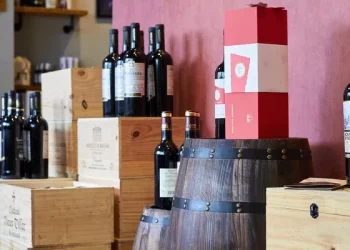Since ancient times, many political celebrities and celebrities are devoted to wine, such as Napoleon Bonaparte, the famous French military strategist and politician in the 19th century.
Legend has it that Napoleon would open champagne to celebrate every victory and drink wine to drown his sorrows when he was frustrated.
While we don’t know his exact wine preferences, there are some clues from the literature.
Napoleon once said, “In victory, you deserve champagne;
In defeat, you need champagne.”
It is a measure of the status of champagne in his mind, and among champagne houses, he is particularly fond of Moet & Chandon.
After Napoleon met Jean-Remy, grandson of the Moet founder Claude Moet, while studying at a military academy in Brienne-le-Chateau, France, in 1782,
He has visited the champagne house in Epernay several times and once awarded Jean-Remy one of France’s highest honours, the Legion d’honneur.
In 1869, Moet & Chandon introduced an extremely dry vintage champagne called the Imperial to commemorate Napoleon’s friendly relationship with Jean-Remy.
Located in the village of Gevrey-Chambertin in the Cote de Nuits of Burgundy, Chambertin is the region’s marquee because of its fame. In 1847,
The manager of the village of Chevre simply added the park’s name, Chambertin, to the village’s name in a bid to raise its profile.
During his time in power, Napoleon was also fond of chambertin, and once praised: “Only through a glass of chambertin can the future appear magnificent.”
“For fifteen years the Emperor Napoleon had been drinking a certain wine of Burgundy (Chambertin), which he liked very much, and believed to be of great benefit to his health…”
A classic CHAMbertin style wine, full bodied with firm tannins and rich aromas of plums, red cherries, earth and sweet spices.
After his defeat at Waterloo, Napoleon was exiled to the island of St. Helena for the rest of his life.
During his exile, Napoleon drank a bottle of sweet Constance wine from South Africa every day, according to Klein Constantia, the country’s leading winery.
To his last breath, he refused to eat or drink anything but a glass of sweet Constance wine.
In the 18th and 19th centuries, sweet wines from Constance were favored by European royalty and dignitaries, and featured in the writings of authors like Charles Diens and Jane Austen.
But in the late 19th century, Phylloxera destroyed most of the local vineyards, many wineries went bankrupt, and production of the sweet wine gradually ceased.
After more than a century of absence,
The legendary Wine has been given a new lease of life at the Chateau Cletania, which offers Klein Constantia Vin de Constance Natural Sweet Wine in the tradition of sweet Constance wines.
Constantia, South Africa), whose first vintage was 1986.
It’s worth noting that the 2009 vintage received a 95 rating from Wine Spectator (WS) and was ranked 10th on the 2015 WS 100 List, the first South African wine to make the top 10 list.
The latest market dynamics at any time to see, please pay attention to.












































